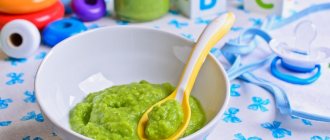However, people may view the concept of “healthy eating” in different ways. Thus, in vegetarian families, the child is deliberately deprived of meat or other animal products.
Adherents of a raw food diet compose their menu in such a way that fruits occupy from 50% to 70% of the total volume of food consumed. The benefits of such nutrition systems are questionable for a growing organism.
Grandma’s rich cabbage soup with pies and stewed potatoes with fatty ribs can have an equally detrimental effect on the health of a small creature How can young parents organize food for their two-year-old baby for his benefit?
What are the benefits of cottage cheese?
As mentioned above, cottage cheese is a valuable source of protein, micro- and macroelements and vitamins in a form accessible to children’s digestion.
It contains vitamins A, C, D, group B (B1, B2, B4, B5, B6, B9, B12), PP, E, beta-carotene. The product contains lactose, beneficial enzymes, lactic acid bacteria and hormones. The mineral composition of cottage cheese is also rich: sulfur, phosphorus, calcium, potassium, chlorine, sodium, magnesium, iron, zinc, copper, selenium, fluorine.
Thanks to the content of calcium, phosphorus and vitamin D, cottage cheese is indispensable for maintaining the health of the child’s musculoskeletal system and teeth. The fattier the cottage cheese, the more calcium is absorbed from it.
Vitamins A and C are responsible for the growth and vision of the child and maintain the integrity of the mucous membranes. B vitamins help strengthen the child’s muscles and nervous system. In addition, probiotics in fermented milk products have a positive effect on the functioning of the gastrointestinal tract and digestive system. Children's cottage cheese normalizes metabolism and weight gain.
When to add curd
From the second half of life, the baby begins to actively move - crawl, stand up, walk. These processes require significant amounts of energy and resources for the development of bones and muscles.
This is where cottage cheese comes to the rescue.
Fermented milk products are considered the next step in complementary feeding after vegetables, fruits and cereals. Cottage cheese should be introduced into the diet of a healthy baby no earlier than 8 months. You can start earlier only if the child has an increased need for calcium, for example, a tendency to rickets.
The timing of the introduction of cottage cheese is not taken out of thin air; it is determined by the readiness of the baby’s body to digest protein in the quantities in which it is contained in the cottage cheese. By 8 months, the body produces enough enzymes to digest fermented milk products.
In addition, the need for such large doses of calcium also does not arise immediately in the child. It is due to the active growth of the skeletal system.
The main components of the diet of a 2 year old child
The daily intake of products that a 2-year-old child should receive should be divided into 4-5 doses. A typical menu for a child at this age looks something like this:
- Breakfast: milk porridge + bread with butter and cheese + tea/cocoa with milk.
- Second breakfast (can be combined with the first): fresh fruit + juice.
- Dinner: must include 3 dishes
- first – soup/borscht + bread;
- second – meat / liver / fish dishes + vegetable side dish / salad / porridge;
- dessert + compote / tea.
- Afternoon snack: cottage cheese casserole / cheesecakes / fruit pudding + jelly / compote / milk.
- Dinner: omelet/vegetable stew + kefir/ryazhenka/tea.
It is believed that the most nutritious meal should be lunch, while the first breakfast and dinner should be approximately equal in calorie content. Second breakfast and afternoon snack serve as snacks.
The following table will tell you what to feed a 2-year-old baby:
Vegetables, fruits, berries
- Boiled, stewed or steamed vegetables no longer need to be pureed (with the exception of mashed potatoes) - the baby can already chew pieces of food.
- Vegetables and fruits can be served in the form of fresh salads, for example: carrots + apple, cucumbers + white cabbage + olive oil.
- You can season some vegetable salads with low-fat sour cream. Walnuts and pre-steamed prunes are added in small quantities to salads.
- Vegetables are also combined in stews, included in soups or stuffed with minced meat.
- žThe child can be given whole or cut into pieces fresh fruits and berries, as well as make dumplings with them, and include them in porridges and cottage cheese casseroles, puddings.
- Baked fruits with sugar will be a wonderful dessert for those with a sweet tooth.
Cereals, cereals
- Semolina, oatmeal (with milk or with dried apricots), rice, wheat, buckwheat - this is what a child should receive every day. Porridges are seasoned with butter or topped with meat gravy. Avoid eating barley.
- The porridge is cooked not crumbly, but viscous (for this, liquids are taken 3-3.5 times the volume of the cereal).
- Based on the porridge, you can prepare meatballs, cutlets, and casseroles.
- Ready-made porridges are supplemented with berries and fresh or boiled fruits or lightly flavored with honey.
Soups, puree soups
- Up to 150 ml of soup or borscht per lunch is the norm for a baby aged 2 years.
- The first courses are cooked in meat broth. Meat is chosen from low-fat varieties. It is advisable to drain the first fat, then cook the meat over low heat, constantly skimming off the foam.
- Pepper, bay leaf and tomato paste should be excluded.
Meat dishes
Low-fat meats are included in cutlets, meatballs, lazy cabbage rolls, soup with meatballs, potato-meat or meat casserole, meat goulash, vegetable stew, soufflé, and also in puree soup (by grinding the boiled piece through a meat grinder).
Fish
- 210 g of fish is the weekly norm for a 2-year-old child, which should be divided into 2-3 doses throughout the week.
- Preference should be given to trout and lean white sea fish: hake, tuna, pollock, mackerel, cod.
- The following dishes are prepared from fish: meatballs, cutlets, baked fish, which is served with a side dish of rice and fresh vegetables.
Liver
- The product is rich in easily digestible proteins, promotes digestion and blood formation.
- žThe baby’s diet includes chopped boiled liver with porridge or stewed vegetables, as well as liver pancakes.
Seasonings
Dishes from the menu of a two-year-old toddler (soups and vegetable side dishes) can be supplemented with dill, parsley, lettuce and celery in small quantities.
Bread
- Wheat or rye bread should be present the menu of a 2-year-old child
- žInstead of fresh bread, you can offer crackers and croutons for soup.
Legumes
- It is advisable to remove the skins from boiled beans and peas to prevent flatulence in a child.
- Beans are added to borscht, served as a side dish or added to a vinaigrette.
- Based on fresh or dry peas, make soup or make a puree, seasoned with milk and butter and brought to a homogeneous state. Whole boiled peas are sprinkled onto vegetable side dishes.
Milk
- The norm of milk consumed by a 2-year-old child per day is 600 ml (200 ml of which is kefir).
- Do not neglect the need to boil and strain the milk before drinking.
- Cocoa, milk soups and porridges are made from milk.
- It is better not to give milk that has been sour at home, so as not to disrupt the baby’s normal digestion process.
Hard cheese
Cheese is most often given to a child for breakfast after the main course with bread brushed with butter.
Chicken or quail eggs
- A single dose of the product is ½ chicken or 1 quail egg. It is acceptable to introduce 2-3 eggs into a child’s diet per week.
- Eggs are not given to children raw. They are hard-boiled or prepared as an omelette.
Dairy products
- High-quality fresh cottage cheese (9% fat) with low-fat sour cream and sugar is suitable for an afternoon snack or dinner.
- Cottage cheese is included in cottage cheese-semolina casserole (with steamed raisins, dried fruits or fresh berries), cheesecakes, thin pancakes or dumplings.
- Sour cream and homemade jam are used to spread cheesecakes and pancakes; it is also added to soups and borscht.
- It is preferable to prepare drinking natural yogurt yourself using special starter cultures.
- Kefir and fermented baked milk should not be too low in fat.
Dessert
- High-quality marshmallows, marmalade and marshmallows are those sweets that you can occasionally pamper children 2 years old with.
- Unsweetened cookies can be given to your child as an afternoon snack.
How to give cottage cheese correctly
Which manufacturer's product should I choose for complementary feeding? What fat content? How much and when to give? How to store? Is it possible to give a child regular cottage cheese that adults eat? These questions arise for a young mother when she plans to introduce cottage cheese into her baby’s diet.
You should choose a product from a manufacturer that is located in your region. Cottage cheese is capricious to transportation conditions, so the less time it spent in transit, the fewer temperature changes it was exposed to, the better.
Preference should be given to a product in original packaging intended specifically for children. You should not buy cottage cheese for complementary feeding in the market by weight.
Regular, even soft, cottage cheese is not suitable for children in terms of its mineral composition; it can only be eaten after 3 years. And the increased acidity of unadapted dairy products can cause microbleeding in the intestines.
Leave curds with fruit additives for the second year of the baby’s life, and in the first year it is better to feed the baby with pure fermented milk product.
The optimal fat content of children's cottage cheese is 4-6%. If your child is very active or does not gain weight well, you can give a higher fat product (10-15%).
It is not recommended to give low-fat cottage cheese to children!
Calcium is absorbed most fully in the afternoon, towards evening. Therefore, it makes sense to leave curd complementary foods for an afternoon snack. You can combine it with fruits, and later with cookies.
Sealed packages should be stored in the refrigerator, but opened packages should not be stored. Fermented milk products are a favorable environment for the development of pathogenic microflora. And if an adult can eat not very fresh cottage cheese without consequences, then such an experiment may not have the best effect on the baby’s body. Therefore, try to buy cottage cheese in small packages of 50 grams. Eat the leftovers yourself or use in baking.
It is correct to introduce curd when:
- the child is absolutely healthy;
- the last vaccination was more than a week ago, and the next one - no earlier than 2 weeks later;
- It's not hot outside.
You need to start giving cottage cheese, like all other first foods, half a teaspoon at a time and monitor the reaction. If you do not notice an allergic reaction in your child, you can gradually increase the dose to 20-30 grams per day. By the age of one year, a child can eat up to 50 grams of cottage cheese per day.
What kind of cottage cheese can be given to children
For babies under one year old, it is better to prepare cottage cheese on their own. Only in this case can you be completely confident in its quality. To prepare this product, you need to pour a little milk into a saucepan, add 2-3 tablespoons of sour cream or a little fresh kefir. The mixture must be kept at room temperature for 2-3 hours.
After this, place the pan on low heat and bring its contents to a boil. As soon as the curd begins to separate from the whey, you need to turn off the stove, and then strain the curd mass, squeeze it and rub it through a sieve.
The cottage cheese made according to this recipe has a delicate and sweet taste. After a year, you can gradually introduce fermented milk products purchased at the market or in supermarkets into your baby’s diet. In this case, you must pay attention to the date of their production and expiration date.
Is cottage cheese harmful for a child?
Many kids really like the taste of cottage cheese and are ready to eat it several times a day. But there are hidden “pitfalls” that every mother should know about.
A large amount of protein creates a load on the not yet fully formed pancreas, liver and kidneys. And when a child eats meat, an egg, and a portion of cottage cheese in one day, this only aggravates the situation.
It is a mistake to feed your child cottage cheese for breakfast. In the first half of the day, protein is broken down with difficulty and simply overloads the body.
As mentioned above, a child’s body becomes able to fully process heavy milk protein no earlier than 8 months. Failure to comply with the recommended timing of introducing fermented milk products, especially cottage cheese, can lead to dire consequences for the child’s body: diabetes mellitus, problems with the kidneys and gastrointestinal tract, hypertension.
There are cases when the administration of cottage cheese is contraindicated for a child. For example, with milk protein intolerance or when the fontanel overgrows too quickly.
In any case, before starting complementary feeding with any new product, you should consult your pediatrician.
We exclude harmful products
Since we’re talking about what’s good for a 2-year-old baby and what’s not, let’s immediately discuss what is strictly contraindicated to feed a baby. The list of such products is quite extensive:
- Smoked meats, deep-fried and spicy dishes, fast food products;
- Seafood that can cause an allergic reaction (shrimp, crabs, mussels, red and black caviar);
- Mushrooms;
- Fatty meats (lamb, pork, geese and ducks);
- Milk not adapted for baby food;
- Grapes and melon, which increase flatulence and disrupt pancreatic function;
- Sweets (cakes, candies, ice cream, chocolate, baked goods, shortbread or puff pastry);
- Honey (for children prone to allergies);
- Sparkling water;
- Pasta and sausages (at least you can give them to your child as an exception).
In addition, take into account the individual characteristics of your child’s body. You should not stuff your baby with what is healthy if he has a natural intolerance to a certain product.










